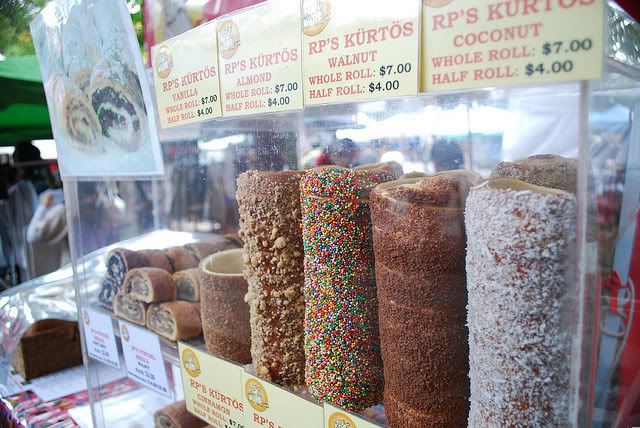Gâteau à la broche? A French take on a Lithuanian cake? I'd never heard of such a thing! So I got on my trusty Internet machine and off I went. I found a fair amount of basic information right away, but a lot of details are still elusive. For example, why did I not know about this sooner? Where is the closest place where I can obtain this pastry? Anyway, here's what I do know:
Gâteau à la broche is native to the French half of the Pyrenees, though it is also made in some isolated parts of central France and a little squirt of Basque country. Like its cousins in the spitcake family, it was traditionally made only for extra-special occasions, like when rich people get married. Also like its cousins, it has become available outside of rich people's weddings—although as far as I can tell, in the case of gâteau à la broche, its reach has only extended to a handful of farmer's markets in tiny towns that are practically inaccessible without a car. That's not a huge deterrent, though. I can hitch-hike. I think I could feasibly obtain one of these!

Gâteaux for sale! [source]

A cut-away section. Much more irregular layering. [ibid.]

How it's made! See the resemblance to the Lithuanian version? [source]

A giant cake that also shows a resemblence to the Lithuanian version. [source]

A cake even bigger than the giant šakotis! I'm looking for more info, but so far I've got nothing. Also, a stuffed tiger. [source]



